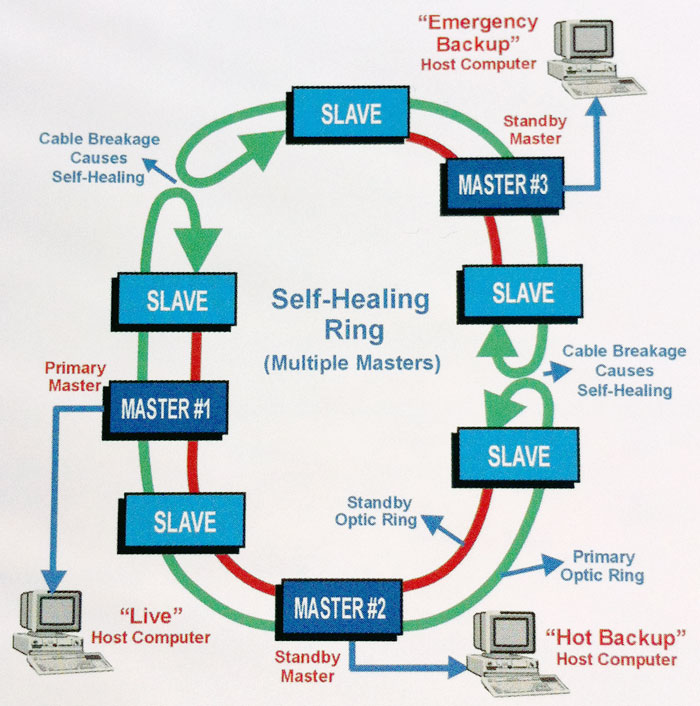Why Choose a Fiber Optic Security System for Maximum Security and Efficiency
Secure Your Building With Trusted Fiber Optic Protection Solutions
In an age where safety and security hazards are progressively advanced, the need for reliable defense remedies is extremely important. Fiber optic safety systems stand out by offering exceptional integrity and efficiency, leveraging advanced light transmission technology to improve surveillance capacities. security fibers. Comprehending the intricacies of fiber optic safety and security can brighten the path to securing your residential or commercial property a lot more efficiently.
Benefits of Fiber Optic Safety And Security
Fiber optic protection services offer a variety of benefits that make them increasingly vital in today's digital landscape. One of one of the most considerable benefits is their superior bandwidth capability, which allows for the transmission of huge amounts of information over cross countries without considerable signal deterioration. This capacity is specifically beneficial for protection systems that count on high-definition video security and real-time tracking.
In addition, fiber optic wires are inherently much more safe and secure than typical copper circuitry. They are immune to electromagnetic interference, making them less at risk to hacking or eavesdropping. This boosted safety is essential for shielding delicate data and keeping the honesty of security systems.
Furthermore, fiber optics are much more sturdy and resistant to environmental aspects, such as moisture and temperature variations, guaranteeing long-term dependability and lowered maintenance costs. The light-weight nature of fiber optic cables also simplifies setup processes, enabling greater flexibility in system design.
Exactly How Fiber Optic Equipment Work
In modern safety and security applications, the operation of fiber optic systems depends on the concepts of light transmission via flexible glass or plastic fibers. These fibers are made to bring light signals over fars away with very little loss, making them optimal for transferring information connected to security surveillance. The core of the fiber, bordered by a cladding product, ensures that light signals stay contained within the core with a sensation referred to as overall interior representation.
When integrated right into security systems, fiber optic cords can transfer information from various sensors, such as cams, motion detectors, and alarms, to a central tracking station. The high data transfer ability of optical fiber permits the transmission of large amounts of data concurrently, allowing real-time monitoring and prompt reaction to potential hazards.

Kinds Of Fiber Optic Protection Solutions
Various kinds of fiber optic protection options have actually emerged to improve security and protection throughout various atmospheres. One famous remedy is fiber optic perimeter breach discovery systems (PIDS), made to keep an eye on and protect building borders through the discovery of vibrations and disruptions along fiber optic cable televisions. These systems provide real-time notifies, enabling punctual actions to unauthorized access efforts.
One more reliable option is fiber optic video surveillance. This innovation leverages high-definition cameras linked by means of fiber optic cords to send video clip information over fars away without considerable loss of quality. This setup is particularly helpful in large locations, such as airport terminals and commercial sites, where traditional copper cable televisions might falter.
In addition, fiber optic sensors are progressively utilized for environmental monitoring, identifying changes in temperature, stress, or acoustic signals that might indicate safety and security breaches or harmful conditions. These sensors supply high sensitivity and precision, making them ideal for essential facilities protection.

Installment and Upkeep Tips
Reliable setup and maintenance of fiber optic protection options are crucial for ensuring their optimum performance and long life. Fiber optic cables must be transmitted firmly, avoiding sharp bends or spins that can compromise their integrity.
Throughout installation, it is a good idea to perform thorough screening of the system to validate that all parts are operating correctly. Routine maintenance checks ought to be set up to inspect the fiber optic wires for any signs of wear or damage, in addition to to make certain that connections continue to be secure. Cleansing the connectors periodically is additionally crucial to prevent signal loss because of dirt or debris.
Moreover, keeping an upgraded supply of mounted elements and their requirements can facilitate easier troubleshooting and upgrades. By sticking to these installation and maintenance pointers, residential or commercial property owners can maximize the efficiency of their fiber optic safety solutions, ensuring a trusted protection against potential threats.
Contrasting Expenses and Performance
When reviewing fiber optic safety and security services, recognizing the balance in between costs and effectiveness comes to be paramount (security fibers). Organizations has to think about the upfront financial investment, continuous maintenance expenditures, and the lasting value these systems supply. While fiber optic systems might call for a greater initial setup expense compared to page traditional copper wiring, their sturdiness and decreased vulnerability to electro-magnetic interference commonly convert to reduced maintenance expenses gradually
Efficiency is one more critical factor; fiber optic protection systems supply improved data transmission rates and boosted reliability. They can cover larger ranges without signal deterioration, making them excellent for extensive residential properties or remote places. Additionally, the high data transfer capability supports innovative safety and security applications, such as high-def video clip monitoring and real-time monitoring, which are important for detailed safety monitoring.
Inevitably, the option between expense and efficiency must be guided by particular safety and security needs and take the chance of assessments. Organizations should examine their one-of-a-kind demands, thinking about factors like residential or commercial property size, safety and security threats, and technical developments. By performing a thorough cost-benefit analysis, stakeholders can make informed decisions that line up with their safety and security purposes while ensuring an audio investment in fiber optic innovation.
Conclusion
In conclusion, fiber optic security services provide substantial advantages in terms of performance, integrity, and immunity to environmental interferences. Ultimately, the adoption of fiber optic modern technology stands for a forward-thinking technique to securing homes versus developing moved here security dangers.